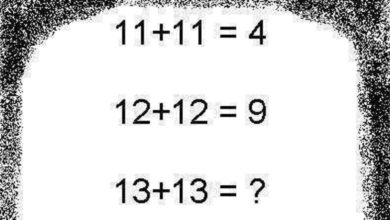Is there more to Ajay Devgn’s outburst?

Does the language row between Bollywood actor Ajay Devgn and Kannada actor Kiccha Sudeep have anything to do with Bollywood’s insecurity about the growing financial muscle of the regional film industry that is reshaping the contours of the Indian film market, both at home and abroad? Perhaps, former Karnataka Chief Miner, H D Kumaraswamy, while responding to Devgn’s “Hindi is our mother tongue and national language” comment, articulated this sentiment the best. He said Devgn must realise that Kannada cinema is outgrowing the Hindi film industry and that it was because of encouragement Kannadigas that Hindi cinema had grown. “Devgn shouldn’t forget that his first movie Phool Aur Kaante ran for a year in Bengaluru,” he added.
.@KicchaSudeep मेरे भाई,आपके अनुसार अगर हिंदी हमारी राष्ट्रीय भाषा नहीं है तो आप अपनी मातृभाषा की फ़िल्मों को हिंदी में डब करके क्यूँ रिलीज़ करते हैं?हिंदी हमारी मातृभाषा और राष्ट्रीय भाषा थी, है और हमेशा रहेगी।जन गण मन ।
— Ajay Devgn (@ajaydevgn) April 27, 2022
THE NUMBERS GAME
Nothing could be further from the truth. Not only is the southern film industry giving the Hindi film industry a run for its money in terms of whipping up revenues, it is, through its dubbed versions, connecting to a pan-India audience. In that sense, Hindi is not the lingua franca of mass entertainment, which feeds more people than politics. There was a time when actors from the southern film industry were like exotic imports to spice up the multi-starrer formula of the late 80s and early 90s. So we had Rajinikanth, despite his demi-god status in southern films, playing second fiddle to Amitabh Bachchan in films like Hum, Giraftar and Andha Kanoon. Kamal Hassan himself, despite award-winning performances in his Tamil films, was given double engine status with the leading men of Bollywood unless they were his own remakes or he was conforming to a stereotype. Cut to today when within a fortnight of release, SS Rajamouli’s RRR crossed Rs 1,000 crore in global earnings second only to Aamir Khan’s Dangal (Rs 2,024 crore) and the director’s own Baahubali 2: The Conclusion (Rs 1,810 crore). One of the biggest reasons for the film’s success was, of course, the film’s universal appeal, which transcended language and fandom barriers. Besides, it neutralised the north Indian narrative of nationalism through a fictionalised version of the lives of freedom fighters Komaram Bheem (Jr NTR) and Alluri Seetharama Raju (Ram Charan) in pre-independence India. In fact, mainstream Hindi stars Ajay Devgn and Alia Bhatt provided just the right amount of stardust. It proved that chest-thumping patriotism was not just the preserve of the Hindi language. Meanwhile actor Dhanush, who has earned the coveted Best Actor award at the renowned BRICS Film Festival for his portrayal in Asuran, is now breaking the mould of the Hindi film hero, and is a sought after choice for leading man. Be it the next-door reassurance of Dulquer Salmaan, the spirit and candour of Nithya Menen or the under-your-skin appeal of Allu Arjun, Bollywood is convinced enough to now court them.
In fact, if the recent success of the epical Baahubali, Pushpa, a Telugu action drama film on sandalwood smuggling, and the KGF series, another edge-of-the-seat thriller on the gold mafia, is anything to go , then movie-goers across India have certainly learnt to prioritise cinematic content over stereotypes.
KGF Chapter 2, while inching to the Rs 1,000 crore club, notched up another success when its Hindi dubbed version made Rs 300 crore in just 11 days. In 2019, Bollywood’s share in domestic box-office revenues was higher than that of south Indian films, Rs 5,200 crore versus Rs 4,000 crore. The money game has clearly turned the tables. According to an Ernst and Young-FICCI report, south Indian films dominated domestic box-office revenues for 2021 at Rs 2,400 crore. Bollywood was second at Rs 800 crore and Hollywood was third at Rs 500 crore. Recently, Tamil legal drama Jai Bhim beat The Shawshank Redemption to become the top-rated film on IMDb.
OTT PLATFORMS HAVE EQUALISED QUALITY, CONTENT AND LANGUAGE
Traditionally, regional cinema has always had richness and variety of content as it was free from the “one-size-fits all” compulsion of mass-entertaining Hindi films. What it didn’t have, despite the multiplex revolution, was theatrical access. The pandemic, indoor viewing and the equalising power of OTT platforms led viewers to sample different and unique storylines. So film aficionados, used to gorging on world cinema, had no trouble watching dubbed or subtitled films from around the country, often in their own languages. Besides, most cable TV operators in Tier II and Tier III cities have been silently feeding a pan-India audience with a diet of regional films, beaming their dubbed Hindi versions in non prime-time hours.
The age of social media has also somewhat dimmed the aura and mystique of superstars and one-man-army protagons. The regional stories have moved away to everyday concerns and common men and women caught in the middle of a world in change and fluid relationships. Particularly the southern film industry has appropriated the creative space, be it in terms of genres, characters, storylines, context and experimentation.
This fact has been admitted none other than Bollywood’s big producer Karan Johar, who was recently quoted as saying that Hindi cinema had “fallen prey to herd mentality” while southern filmmakers have had the “courage of conviction to do their thing.” It is one of the reasons why he has strategically tied up as co-producer with SS Rajamouli. The fact is that regional films are referencing themselves against international benchmarks while Hindi films are caught in a delusional cul-de-sac. It is not that Bollywood isn’t endorsing content-oriented, independent or meaningful cinema, but when it comes to mega projects, the big production houses play safe and stick to the tried and tested. Even if they want to push the envelope, they end up just about nudging it.
This is one of the reasons that there is a reverse imitation game. If Rajinikanth starred in remakes of Bachchan hits at one time, recent Bollywood grossers like Bhool Bhulaiyaa and Drishyam have been remakes of southern films.
STAR VERSUS EVERYMAN
Regional film industry heroes have been able to come down from their larger than life image far more convincingly than Hindi film heroes. The Khan triumvirate has tried real hard to play everyday characters but their halo has defeated the purpose. But southern industry A-lers have not had any qualms about stripping their aura in out and out commercial ventures, be it Vijay Sethupathi, who played a transgender, Dulquer Salmaan, who played a fugitive or the iconic Madhavan, who plays troubled ISRO scient Nambi Narayanan, who fought years on end for justice after being falsely accused of espionage in Rocketry: The Nambi Effect. The film has been shot simultaneously in Hindi, Tamil and English and will also be released in the Telugu, Malayalam, and Kannada languages.







